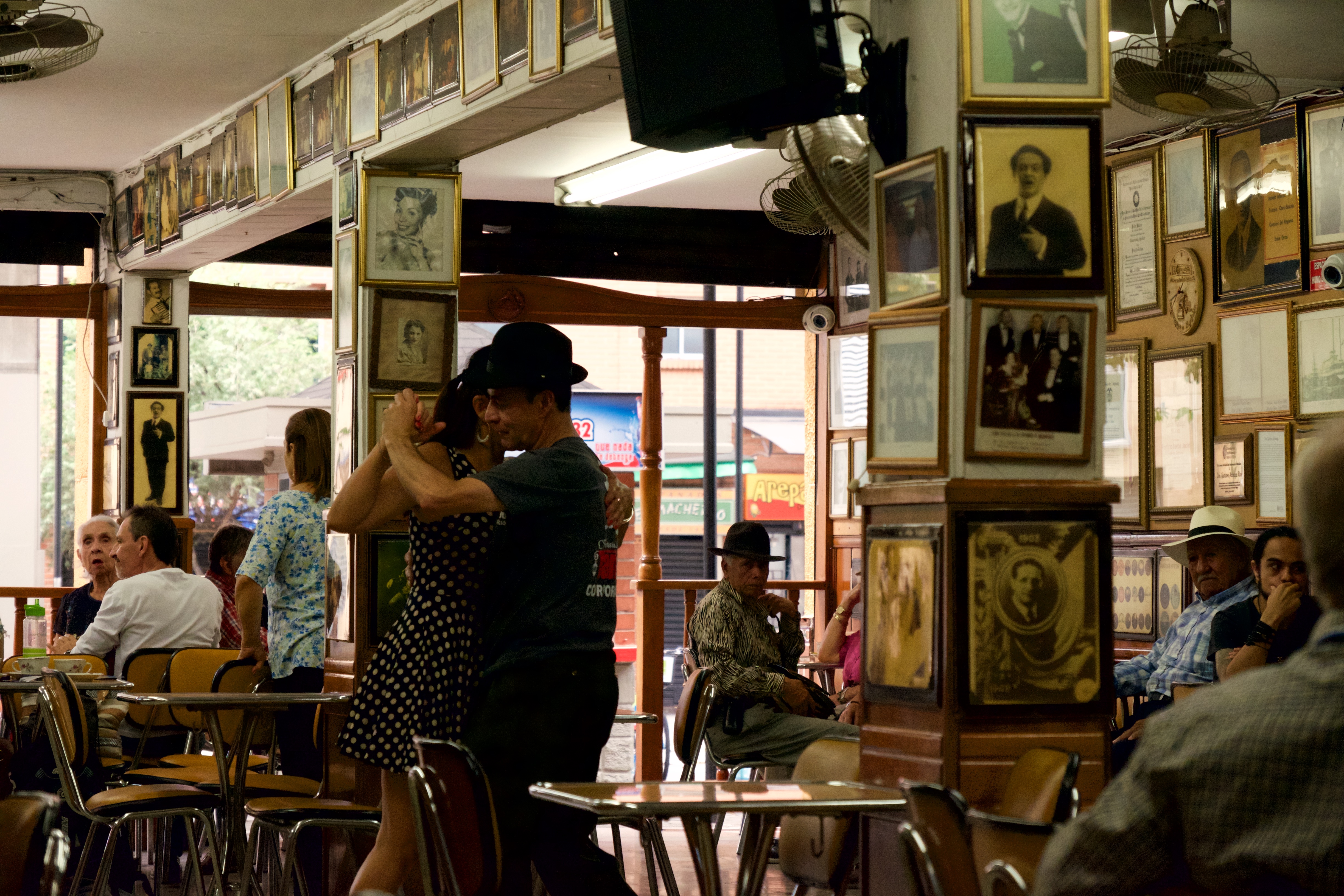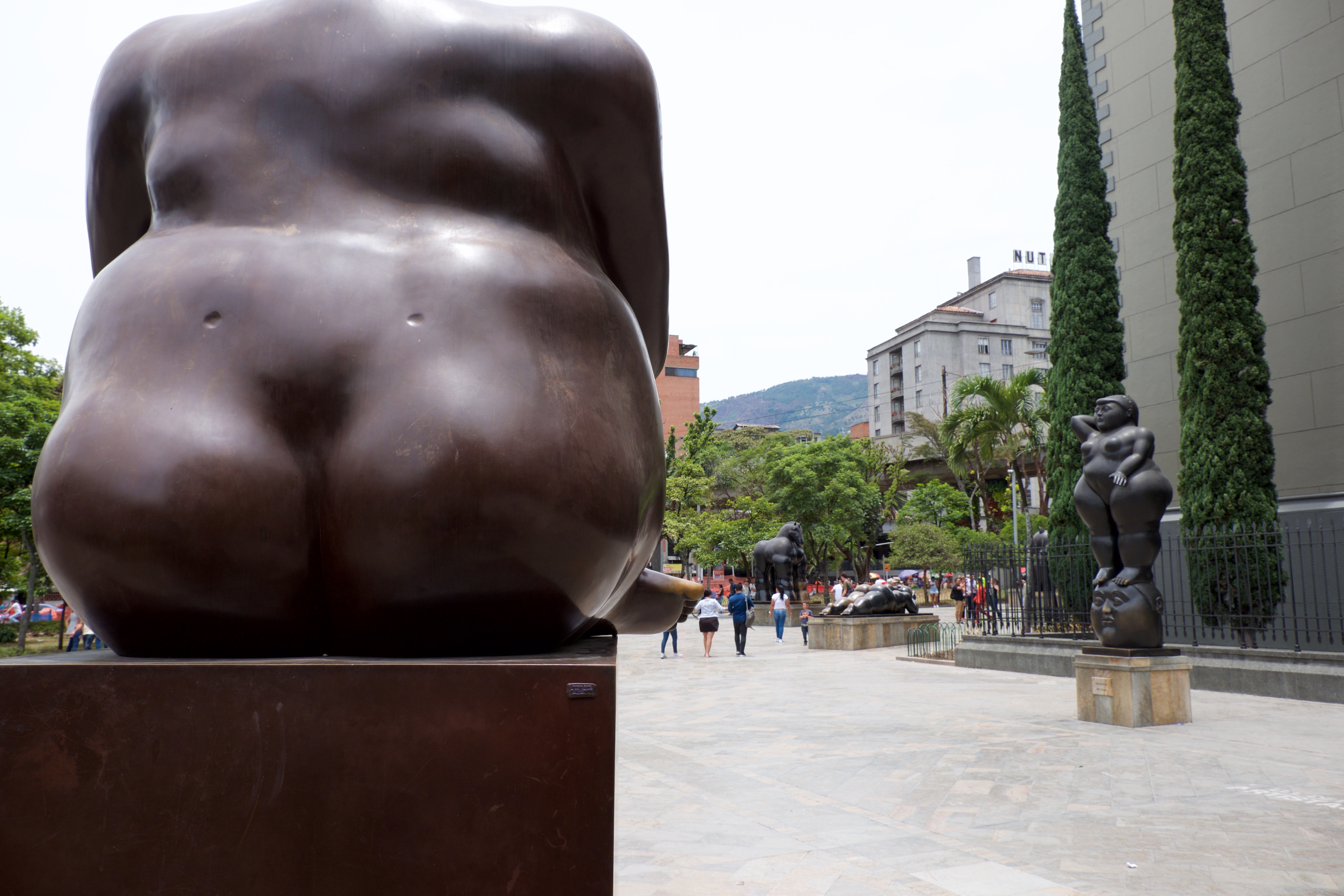Medellin - The past and the present

Medellin in the early 90’ was one of the most dangerous cities in the world. And you can still tell today. Not because it is particularly unsafe or because we felt threatened in any way, but because of the wounds that terrible period left in Colombians hearts.
We stayed in an apartment, in the good neighbourhood of Medellin. The family who lives there rents a room and welcomes you in their home for little money. The carrera 70, famous among foreigners and local as one of the place to enjoy the night, is literally two minutes walking from the door.
After a gentle stroll in the afternoon nearby our accommodation to start knowing the surroundings, we wanted to go to a central theatre where a traditional dances show was on the board. When we talked about our plans with our host though, she didn’t even consider it as an option. “At this time” she said “is simply too dangerous to go to the city center”. We believe it was fear that was talking for her, but we didn’t want to take the risk and we changed our plans.
We headed off to El poblado, another neighbourhood famous for the nightlife. Definitely a less interesting destination, but sometimes it is not about the destination, it is more about the journey. We basically crossed the entire city and, since was Saturday night, we felt on our skin the crazy euphoria and Latin passion bursting out from every corner. It was also the night el Nacional, the local football club, was playing in its stadium. Between the supporters (lots of women among them) and the party-goers, the atmosphere was vibrant. We were just too tired and Erika’s ankle too sore to join the crowd.
The next day we took part of a free walking tour, organised by some history students who want to talk about Medellin from every point of view, not just the oversimplified, glorified and pro-entertainment Narcos period. Marialuz, our guide, was so passionate about her city it was impossible not being emotionally moved by her Antioquian pride.
She explained to us the pillars of the past: the gold mines, where Indians and slaves died terribly, the agriculture, the intimate relationship between the Colombians and their lands and the role of the Church and the Hispanic crown. Surprisingly she wasn’t too harsh against the European “invasion” or too outraged for the Indians obliteration. She told us the most simple and poor ones still don’t understand the seriousness of what happened. It is like if this critical analysis haven’t reached yet every social level. Nevertheless, used to the tones in Australia, I was expecting a stronger position from her.
Then she moved to the current Colombian challenges: the war against the FARC and the narcotraffic. She, as many people here, lost two brothers: one in the war with the revolutionaries and one as a policeman against narcos. That’s absolutely terrible. Considering also that there is still many people here who see Pablo Escobar as a great person (especially the ones who live in the Escobar barrio).
On less serious note, we also stopped by a very picturesque bar: El cafe de Malaga. Here, every day, dozens of experienced dancers spend hours practising and enjoying Cumbia, Salsa, Rumba…and Tango! Yes because if Argentina is the country where Tango was born, Colombia is the country where it was most loved (said by Colombians…).

We limited ourselves to watch them and admire their enchanting choreographies, even though was hard not being caught by the Latin rhythm.
For dinner we went for the light version of the Bandeja Paisa but we still felt like we ate our weekly intake of fat in one go…was worth it though!!
